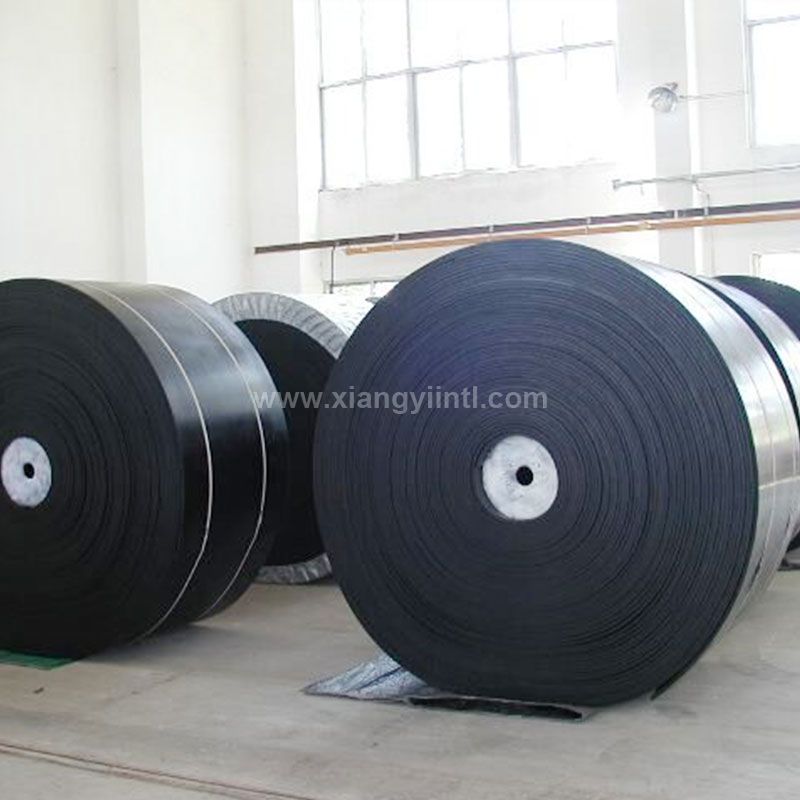What are Types and Applications of Conveyor Belts?
Conveyor belts operate on the principle of a continuous loop, where materials or products are placed on the belt and moved from one point to another. The belt is typically powered by electric motors or other drive systems, propelling the movement of materials along the conveyor's length.

Conveyor belts can be flat or have various configurations depending on the application. They are equipped with pulleys or rollers at each end, allowing the belt to move in a circular motion. When materials are placed on the conveyor belt, they are carried along the loop until they reach their destination.
Types of Conveyor Belts
There are several types of conveyor belts, each designed for specific purposes and industries. Some common types include:
1. Flat Belt Conveyors
Flat belt conveyors are the most basic type, featuring a flat, continuous loop of belt used for general material handling and transporting irregularly shaped items.
2. Roller Conveyors
Roller conveyors consist of rollers mounted on a frame, allowing items to move smoothly and freely along the conveyor's length. They are commonly used for heavy or bulky items.
3. Modular Belt Conveyors
Modular belt conveyors feature interlocking plastic modules that form a continuous belt. These conveyors are ideal for transporting food products and other materials that require a stable and hygienic surface.
4. Magnetic Belt Conveyors
Magnetic belt conveyors use magnets beneath the belt to attract and move ferrous materials. They are commonly used in metalworking and recycling applications.
5. Cleated Belt Conveyors
Cleated belt conveyors have raised sections or cleats on the belt's surface, ensuring items do not slide or fall during transportation. They are often used for inclined or steep applications.
The Efficiency and Environmental Benefits of Plastic Crusher Machines
Polypropylene Sheet: A Versatile and Sustainable Solution for Diverse Applications
PP Tarpaulin: The Versatile and Reliable Protective Covering
Benefits of using PE surface protection film
Advantages of Polyurethane Screen Panels in Screening and Separation Processes
Key Considerations When Choosing Rubber Stoppers
What is the difference between MDPE and HDPE gas pipe?
Applications of Conveyor Belts
Manufacturing Industry
In the manufacturing sector, conveyor belts are used for automated assembly lines, moving products between workstations and facilitating efficient production processes.
Warehousing and Distribution
In warehouses and distribution centers, conveyor belts are employed to move packages, boxes, and pallets, streamlining order fulfillment and logistics.
Mining and Quarrying
In the mining and quarrying industry, conveyor belts are crucial for transporting bulk materials, such as coal, ores, and aggregates, from excavation sites to processing plants.
Agriculture and Farming
Conveyor belts play a role in agricultural operations, helping with the movement of crops, grains, and other produce during harvesting and processing.
Airport Baggage Handling
Conveyor belts are essential in airports for handling passengers' luggage and ensuring efficient baggage transfer from check-in to the aircraft.
Challenges and Safety Considerations
While conveyor belts enhance efficiency, certain challenges and safety considerations must be addressed. Issues such as belt misalignment, material spillage, and potential hazards for operators demand careful monitoring and maintenance.
Employers must provide proper training and safety protocols for personnel working around conveyor systems to prevent accidents and injuries.
The conveyor belt's journey from simple wooden belts to complex automated systems has shaped the landscape of industries worldwide. Its ability to efficiently transport materials and products has significantly contributed to increased productivity and streamlined processes. From manufacturing to mining, conveyor belts continue to play a vital role in modern-day material handling and transportation.
Additional reading:RPET: Transforming Plastic Waste into Sustainable Solutions
How do you recycle plastic lotion bottles?
Previous: What is an Industrial Hose?
Next: How can I ensure the recycled PET flakes I purchase meet industry standards and regulations?
If you are interested in sending in a Guest Blogger Submission,welcome to write for us!




Comments
0